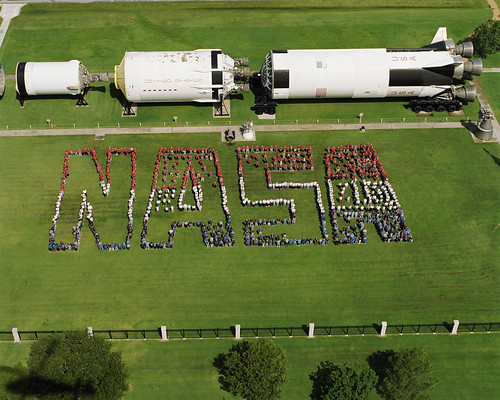Penn State and NASA Join in Education Program
If you see a shiny new Airstream trailer in front of your local school, it’s not necessarily because of classroom overcrowding: it’s likely part of the "NASA to the Schools, Penn State" program, a new 5-year cooperative program that’s putting the Big Ten athletic conference school forward as the face of NASA’s K-12 educational outreach.

EarthTimes.org reports:
The $27 million agreement comes under NASA’s Aerospace Education Services Program, one of the oldest National Aeronautics and Space Administration programs now in its 35th year.
Penn State took over Sept. 1 from Oklahoma State University.
"This is the only program in the United States that can put professional science educators on the ground in 50 states and territories," said Penn Sate Professor William Carlsen, director of the university’s Center for Science and the Schools.
The Penn State program will shift the existing emphasis from one-time school visits and short teacher seminars to university-based, space-oriented summer courses for teachers.
School visits will continue, but rather than emphasizing auditorium presentations, NASA education specialists will work closely with teachers and school administrators to infuse cutting-edge science content into extended instructional units, officials said.
Penn State’s Center for Science and the Schools website can be found here. They’ve got some innovative plans for curriculum development and teacher training:
A meeting at Cornell University with scientists who study Mars will kick off development of the first course for teachers. To supplement instruction by classroom teachers who have enrolled in summer courseware, the six Airstream “NASA to the Schools” vehicles will crisscross the country with a scaled-down version of a Martian Rover. Just like a real Rover, these half-pints will sport cameras that enable them to monitor their environment in 3-D. In a novel twist, the educational rovers will also have the capability of projecting images in 3-D using "GeoWall" technology, letting students see exactly what the Rovers saw on Mars.
NASA to the Schools will use many new instructional technologies, developing continuing education content for delivery through NASA’s Digital Learning Network. Education specialists will get in on the ground floor of new NASA projects to aid them in their continuing education components as well.
For a preview of what the tots might experience as part of their "Rover" education, check out this video of the latest Rover Flight Director’s report.
